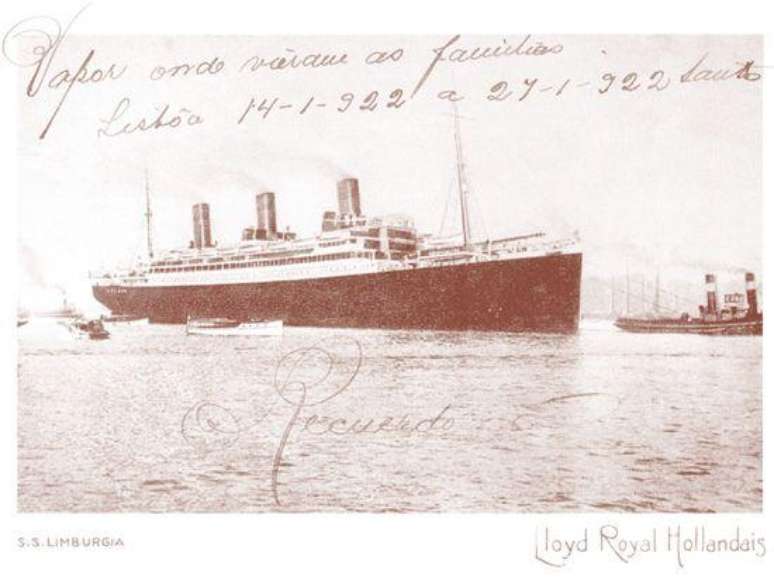Between citizens and descendants the community is estimated at around 8 million people.
The third repatriation flight of Brazilians from Lebanon arrived in Sao Paulo on Thursday (10/10) aboard a Brazilian Air Force (FAB) plane with 218 passengers on board. The first three repatriation flights from Lebanon have already brought 674 people and 11 pets to Brazil.
Lebanon is the country that hosts the largest number of Brazilians in the Middle East, with a community estimated at 21 thousand people.
Efforts to rescue some of these citizens, who sought repatriation in the conflict between Israel and Hezbollah, have drawn attention to the deep ties between Brazil and Lebanon.
In addition to the Brazilians living in the country, the relationship is also strengthened by the huge community of Lebanese and Lebanese descendants who have migrated to our country since the end of the 19th century.
According to the Brazilian Institute of Geography and Statistics (IBGE), 12,336 Lebanese lived in Brazil in 2010, the date of the last census with published results. This figure corresponded to 2.9% of the total number of foreigners in the country at that time.
But when it comes to the Lebanese community in Brazil, the estimated numbers are much higher. Among citizens and descendants, the Brazil-Lebanon Cultural Association speaks of something around 8 million people.
This makes Brazil the country with the largest community of Lebanese and descendants in the world, surpassing even the population of Lebanon itself, which currently stands at around 5.5 million.
But how did the two countries manage to build such strong ties, despite the distance and cultural differences that separate them?
The Lebanese diaspora
The great Lebanese migratory flow towards Brazil dates back to the end of the 19th century. The first ship bound for Santos port left Beirut in 1880.
At the time, what is now Lebanon was under the rule of the Turkish-Ottoman Empire and a feeling of discontent with the political, economic and religious situation motivated a process of emigration.
“Many Christians suffered religious persecution, while work and land became increasingly scarce,” says Nouha B. Nader, cultural director of the Brazil-Lebanon Cultural Association.
Oswaldo Truzzi, professor at the Federal University of São Carlos (UFSCar) and specialist in the sociology of migration, explains that the entry of low-cost industrialized goods, coming at the same time especially from England and France, gave impetus to the migratory wave .
“A wide range of manufactured goods began to flood local markets, undermining the domestic and small-scale production of several families in the interior of the country,” he says. “This has led many families to send some of their members abroad to contribute to their livelihood.”
Truzzi also states that the change in the Ottoman Empire’s military conscription regime, which became mandatory around 1909, before the outbreak of the First World War, also motivated many young people to leave the country.

Finally, part of the responsibility is also attributed to Emperor Dom Pedro II. The last monarch of the Empire of Brazil, during a visit to Lebanon in 1876, reportedly promoted the country to the local population.
“He told the local population that Brazil was the land of wealth and prosperity, where there were good job prospects,” Nader says.
According to the director of the Brazil-Lebanon Cultural Association, the newspapers of the time widely reported the news, which also contributed to building a positive image of the country among the population.
Destination: America
The vast majority of Lebanese who left their homeland in the late 19th and early 20th centuries headed for the Americas.
The group was mainly made up of Christians, attracted to the region also for its religious proximity.
According to the Khayrallah Center for the Lebanese, between 1870 and 1930, approximately 330,000 migrants left what was then called Bilad al Sham or “Greater Syria” (territories that today include Syria, Lebanon, the Palestinian territories and Israel). Diaspora Studies at North Carolina State University.
Of these migrants, approximately 120,000 went to the United States and another 210,000 to South America, mainly Argentina and Brazil.
At that time, the documents did not distinguish the exact origin of the immigrants, which made it difficult to accurately count the Lebanese diaspora.
But according to Oswaldo Truzzi, initially the largest group headed to the United States, where they believed there were better economic opportunities.
Little by little, however, the success of the families who chose Brazil as their new home began to attract more and more interested people, making the community grow.

Between 1884 and 1933, 130,000 Syrians and Lebanese entered Brazil through the port of Santos, according to researcher Jeffrey Lesser, professor of history and director of the Latin American and Caribbean Studies Program at Emory University.
The first Brazilian consulate opened in Beirut during this time, in 1911.
“Brazil at the time did not have a developed middle class. We had landowners and a poorer population, descendants of former slaves,” says sociologist Oswaldo Truzzi. “This gave space for the Lebanese to consolidate in the commercial area and experience economic rise and social mobility.”
The community settled mainly in the state of São Paulo, where a commercial center was already beginning to develop around the coffee economy. But some Lebanese also settled in Minas Gerais, Rio de Janeiro and, to a lesser extent, in other states, such as Amazonas, where some Lebanese moved during the rubber boom.
After the first wave of migration, Brazil received at least two other large waves of Lebanese: one between 1921 and 1940, also with a Christian majority, and a second between 1941 and 1970, with a majority of Muslim immigrants in fleeing sectarian conflicts in their country. . Christmas.
Since then the flow has decreased, but Brazil continues to welcome Lebanese, especially from the south of the country.
Return to Lebanon
At the same time, some Lebanese and their descendants who had families in Lebanon ended up returning, forming a Brazilian community in the Middle Eastern country.
“Some have moved permanently, others come and go as opportunities arise,” explains Truzzi. The researcher also states that many of these Brazilian immigrants end up fostering ties between Brazil and Lebanon by working in the export and import sector between the two countries.
Between January and September 2024, Brazil exported the equivalent of $345.9 million to Lebanon and imported $1.4 million.
Nouha Nader, of the Brazil-Lebanon Cultural Association, says many Lebanese descendants left the country and returned to Lebanon in the 1980s and 1990s, when Brazil entered an economic crisis that would only be overcome with consolidation of the Royal Plan.
“The Lebanese and their descendants who lived here, very dependent on trade, then decided to return to Lebanon, bringing their Brazilian roots with them,” he says. “Most live in the Bekaa Valley, where they speak Portuguese and eat the food here.”
Nader also cites the existence of Avenida República do Belgio in the city of São Paulo and Rua Brasil near the port of Beirut, as well as many other cultural and artistic exchanges as part of the strong ties between the two nations.
Source: Terra
Rose James is a Gossipify movie and series reviewer known for her in-depth analysis and unique perspective on the latest releases. With a background in film studies, she provides engaging and informative reviews, and keeps readers up to date with industry trends and emerging talents.


![Such a wonderful sun in advance: Summary of the episode of Thursday on August 14, 2025 [SPOILERS] Such a wonderful sun in advance: Summary of the episode of Thursday on August 14, 2025 [SPOILERS]](https://fr.web.img6.acsta.net/img/f2/d1/f2d1b407f018a903d063481a150a2e19.jpg)



